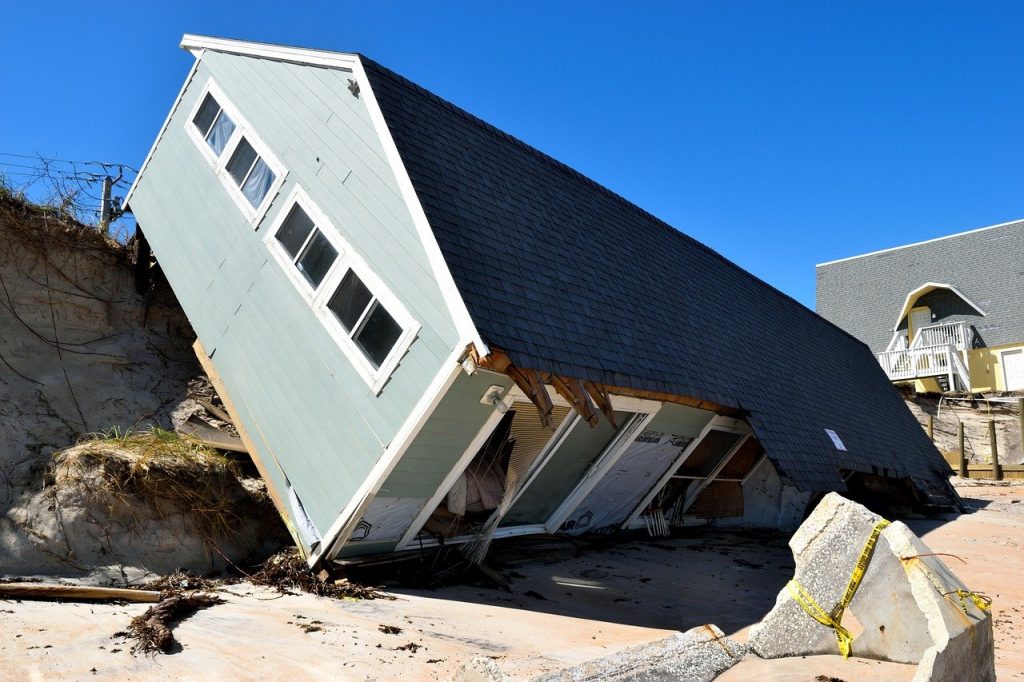Climate change is making weather more predictable and extreme. Additionally, the global energy crisis hangs a dark shadow over the world. Both of these combined means weather and its effects will impact your life like never before. So, no matter where you live, weatherproofing your home should be a top priority as you enter a new unpredictable year.
Portal Improvements
Draughts, wind, and leaks can come in through your portals. Windows, doors, and cat or dog flaps all but invite the weather inside. A storm brings with it all the nasty weather effects that can cause a nightmare. But with some simple improvements, you can drastically reduce how your house is impacted. For example, renewal by Andersen window replacement removes your old and inefficient panes in favor of modernized and stylish new ones. Modern windows are designed to keep you warm and safe. So, no nasty water or wind effects during the worst.
Repair Cracks in the Walls
If you have lived in your house for a reasonable amount of time, you may begin to feel a little chilly in some areas. That is because cracks can form in the walls, allowing adverse weather to come inside. Draughts are one of the leading causes of a cold home. So, if it feels cold no matter what you do, it could be that you need to get filling. Cracked walls cost you more on your heating bills and can pose an extreme health risk. Supporting walls, for example, can collapse. Or cracks might get so big they require a professional to fill them.
Inspect the Roof
A compromised roof is one of the worst things that can happen to your house. And the weather loves to throw all it can at it. Fortunately, your roof is designed to take the brunt of adverse weather. However, years of taking a beating can take their toll. If your roof becomes damaged, it can let in leaks. A leaking roof causes all kinds of damage, such as wood rot, mold, and potential electrical damage. Further, holes and cracks will allow cold air inside and let your warm air escape. This will cause your heating bills to increase substantially during the colder months.
Maintain Your Gutters
Bad gutters will cause a myriad of issues. Clogs and leaks will extend to more severe problems that spread throughout your home. Following a storm, debris and leaves will build up and block rainwater from draining correctly. A blocked gutter will cause foundation and roof damage, further compromising the safety of your home. Fortunately, taking care of gutters is easy. First, check they are free from debris before a storm, so drainage can occur. Then remove any clogs after a storm when it is safe to do so. Finally, you can fill any holes with waterproof sealant.
Install Shutters
You can use shutters for lots of reasons. One is to control how much light gets in. But they are also great for privacy, security, and weather protection. When installing shutters, you can protect glass from the harsh effects of heavy rain and hailstone, making cleaning a little less stressful. However, the best reason for shutters is that missiles and other items won’t damage your glass windows and doors. Suppose a large branch or stray lawn chair is propelled by a hurricane towards your doors. In the case you do not have shutters, this could be deadly.
Add a Storm Door
In addition to shutters, storm doors offer extra protection and flexibility for exterior doors. And they allow for more light and ventilation. But crucially, they also shield your house from undesirable weather effects. Rain, hail, and even snow might find a way into your home. Additionally, cold air is kept out, and warmer air is kept inside. Therefore, a storm door will contribute to keeping your heating costs as low as possible when combined with other installations. Finally, they offer an extra layer of protection from unwanted intruders.
Be Vigilant Against Wildfires
The wildfires of the past few years have been nothing short of Hell on Earth. In 2020 alone, and only in California, wildfires caused 33 deaths, 10,488 destroyed buildings, and $12 billion worth of damage. While you cannot stop wildfires, here are some things you can do to protect your home:
- Check gutters for leaves and twigs
- Trim the lower branches of tall trees
- Use fire-rated roofing materials
- Remove dead foliage
- Keep firewood 30 feet from your home
- Replace single-pane windows with double-paned ones
- Install metal angle flashing on the roof
While your home may not be completely safe from the devastation of a wildfire, taking some precautions might just help reduce the damage and save lives.
Secure Loose Furniture
The wind is a major problem for many parts of the world. And storms appear to be getting stronger while appearing more frequently. Of course, the effects of climate change might have something to do with this. But whatever the cause, wind can be an extreme hazard to your home. Wind itself causes structural damage, but it also lifts and throws things at your house too. It’s a good idea to secure anything loose that cannot be brought inside. For instance, outdoor dining tables can be moved to a safe space. Or you can cover loose items with tarps.
Get Surge Protectors
Lighting storms are something to behold. Many people have a phobia of thunder and lightning, but they are a spectacle of nature for most. No matter how much you see a thunderstorm, it never gets old. But lightning is extremely dangerous, and although the chances of electricity affecting your home are slim, it can happen. In particular, electronic devices like your TV and PC can be damaged. You can protect them by unplugging what you can. But appliances like your fridge cannot be switched off. Surge protectors provide a good defense against power spikes.
One Way Valves
Flooding is also a severe weather issue with an increase in frequency. Some parts of Europe and the UK can attest to the devastation caused by rising waters, which have plagued them over the past few years. Flooding can actually cause more damage to a home than a fire. In addition to wood rot, mold, and damp from excess water, drainage and wastewater become a serious biohazard issue. Fortunately, you can protect against drainage issues. Installing one-way valves on your toilets and drains prevents masses of sewage from entering your home.
Maintain Adequate Drainage
Drains connect to a public sewer or a domestic septic tank by gravity, which does most of the work. But drainage can become damaged by adverse weather or neglect. If your drains become completely clogged, they are expensive to repair. In addition, they can cause nasty biohazards such as sewage entering the home and burst pipes. However, drain maintenance is easily done by treating with off-the-shelf drain cleaners and boiling water each week. You should also never flush anything but toilet tissue and never pour cooking fats or oils into your drains.
Keep a Close Eye on Reports
Of course, none of the above preparations are useful if you do not know when to use them. For example, shutters will not help if left open during a storm, and your roof could be one hurricane away from collapse. Fortunately, you can significantly reduce the effects of adverse weather by keeping an eye on news reports. Today, you can quickly access up-to-date weather reports using the internet. Apps like The Weather Channel and WeatherBug will alert you to incoming hazards. With enough warning, you can secure loose items, clear the gutters and stay safe.








